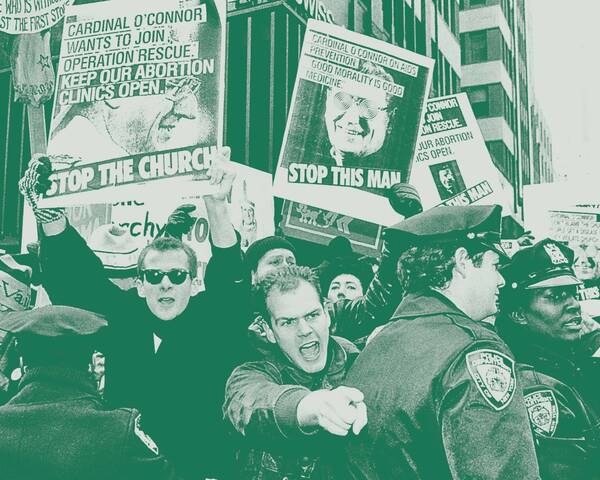Letters / On “What the Record Doesn’t Show”
Vicky Osterweil significantly mischaracterizes Sarah Schulman’s project and arguments in Let the Record Show, Schulman’s history of ACT UP New York released this spring.
Osterweil primarily criticizes Schulman’s methods: Let the Record Show draws largely from nearly 200 interviews with surviving members of ACT UP New York, and Osterweil believes this skews the book’s focus toward the “cis white gay men with access to legal, media, financial and scientific resources” who had the best chances of living past the worst years of the AIDS crisis in the United States. But in fact, Schulman—herself highly conscious of the limitations and determinations of survival—intentionally supplements the record of the living with the contributions of the dead, focusing on women and people of color including Katrina Haslip, Ray Navarro, Keith Cylar, Keri Duran, and Phyllis Sharpe.
Osterweil particularly objects to Schulman’s critique of a scene in Ryan Murphy’s television show Pose, which writes Black trans activists into ACT UP’s famous Stop the Church action—activists who, Schulman claims, were not actually present. Osterweil reads a transphobic reflex into Schulman’s dismissal of the scene, arguing that this first appearance of trans women in the book casts trans women as “interlopers” and “deceivers.” But this is a misreading. Schulman is in fact targeting Murphy, David France, and other icons of the well-resourced culture industry making bank on a misrepresentation of history; if there’s a “deceiver” depicted here, it’s not Murphy’s fictional trans characters, but Murphy himself. In this passage and throughout the book, Schulman draws our attention to the impulse to rewrite history in alignment with a sentimentalized conception of the past rather than soberly assessing what took place.
At stake here is more than a debate about who was present during a few hours of frenetic political activity. As we reassess questions of organizational form in light of earlier movement victories, limits, and losses, we will time and again slam into the fact that politically effective people are not always as we imagine them. This is one of Schulman’s arguments: She makes the case that, despite ACT UP having been a majority white and male organization, as a collective it was capable of significant anti-racist and feminist wins for people with HIV/AIDS. If we believe that social identity is neither necessary nor sufficient for political consciousness, then the ability of a particular coalition to have dramatic political effects for people who are not active or proportional participants in that coalition should not be surprising.
In a broader sense, Osterweil’s critique misses the point of Schulman’s theory of change, and misunderstands the role that Schulman assigns to ACT UP in the history of the HIV/AIDS epidemic. In the late 1980s, as people with HIV/AIDS died of disease and neglect, without reasonable treatment in sight, conservative commentators and reactionary politicians openly speculated about putting people with HIV/AIDS into camps. Today, an HIV infection is highly manageable with access to the standard of care, and social protections for people with HIV/AIDS are present, if sometimes anemic, throughout the global north. Schulman’s point is to force us to ask how this dramatic turn of events took place, and how comparatively few people had such an outsized effect on the distribution of power, resources, and access to life.
In our present conjuncture, some of the social forms and processes that enabled ACT UP to be effective are still in force, and others are not. By extension, some of ACT UP’s organizational structures—which, contrary to Osterweil’s representation, are far removed from top-down NGO volunteerism—will be useful to us, and others won’t. Understanding this difference is the real task for us as students of movement history who also want to be effective organizers right now.
Brooklyn, NY
